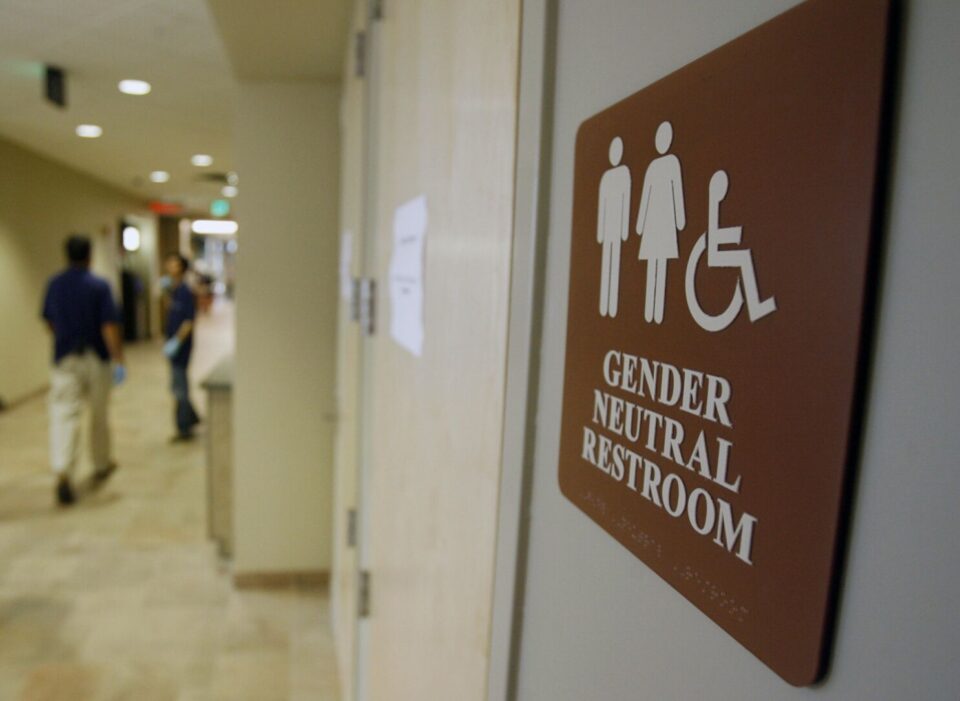Some transgender students have stated they do not wish to have a separate restroom for their use.
All-gender restrooms for students could be forced into all California K-12 schools if a bill introduced by State Senator Josh Newman (D) is successful.
Senate Bill (SB) 760, proposed Feb. 17 by Newman, Chairman of the Senate Education Committee, would impose a state-mandated requirement for all school districts, including charter schools within the district, to provide an “all-gender restroom to meet certain requirements, including that it (1) has appropriate signage identifying the bathroom facility as being open to all genders, (2) is unlocked, unobstructed, and easily accessible by any pupil without requesting access from teachers, faculty or school staff and (3) is stocked with menstrual products, as specified.”
The new bill would be an alternative to the traditional gendered bathrooms currently in place at California schools and is expected to provide bathroom access to students who do not identify with traditional genders.
“Schools should provide a safe and inclusive environment for all students, one where they’re able to focus on learning and where they’re encouraged to thrive academically, socially and emotionally,” Newman said.
While this may be seen as a solution for transgendered students to have a safe and designated restroom for their use while at school, it’s not a new idea as at least some high schools in California already set aside restrooms for this purpose. The challenge is that there are transgendered students who do not wish to have a separate restroom for their use and insist on using the traditional binary restrooms in accordance with their gender identity.
Nease High School in Ponte Vedra, Florida had gender-neutral restrooms available for students but 19-year old transgendered Drew Adams successfully sued the school board when he was told he could only use those facilities and not the boys’ bathroom that he preferred to use.
The federal judges ruled that “The School Board’s bathroom policy, as applied to Mr. Adams, singled him out for different treatment because of his transgender status. A public school may not punish its students for gender nonconformity. Neither may a public school harm transgender students by establishing arbitrary, separate rules for their restroom use.”
Adams is not an isolated case, there’s others like Gavin Grimm and two unidentified Tennessee students who also chose not to use gender-neutral bathrooms and sued for the right to use restrooms aligning with their gender identities.
In California, the Cameron Family YMCA in Santee is dealing with calls for its closure after a 17-year-old girl complained she was exposed to male genitalia in the female locker room. The Y is considering policy changes in a balancing act to try to provide safety and protection for all its members.
A brief on bathroom incidents released by Family Research Council, a nonprofit research organization, pointed out “It is important to note that the concern is not that transgendered individuals are more likely to be sexual predators, but rather that sexual predators could exploit such laws by posing as transgendered in order to gain access to women and girls.”
Such may be the case at Ashburn High School in Loudoun County, Virginia, where a young girl was assaulted in a bathroom by a student who later went on to assault another girl at Broad Run High School. The 15-year old teen was said to have worn a skirt during the assault. The issue became a point of contention with angry parents protesting at the school’s board meeting about bathroom policies accommodating transgender students.
The question then becomes how to balance the needs of transgendered students against the safety of students who can be victimized by opportunist predators or someone of the opposite sex who may be stronger and can overpower female bathroom users.


